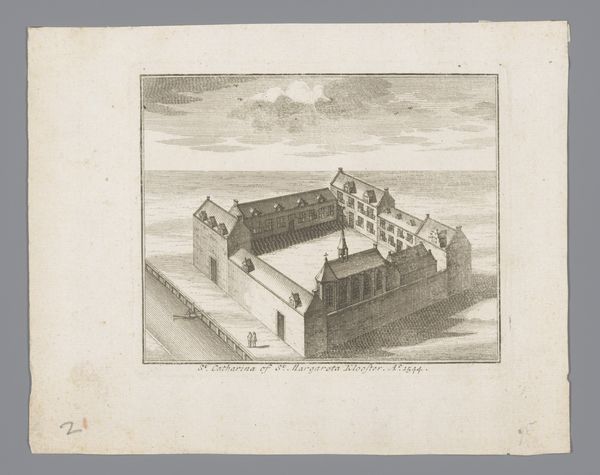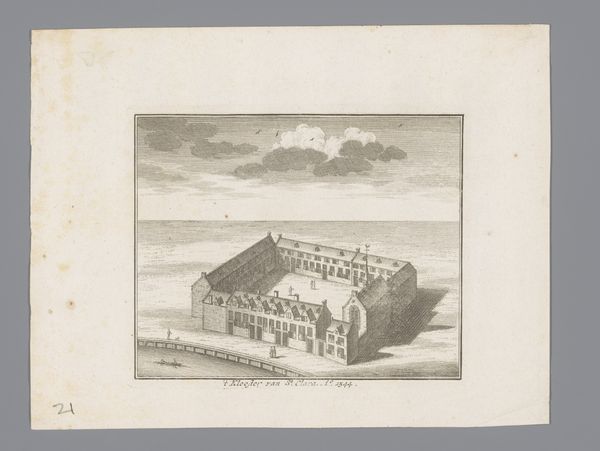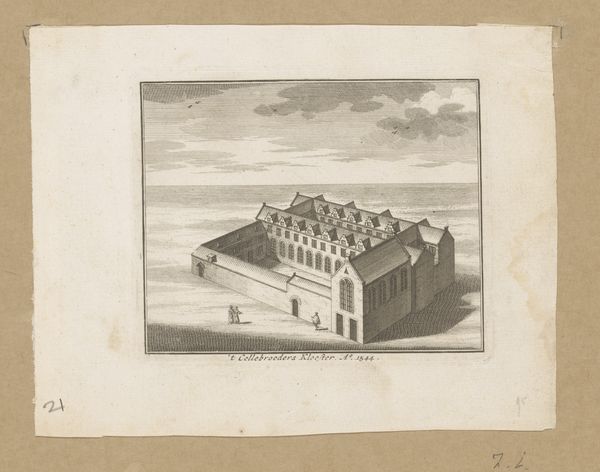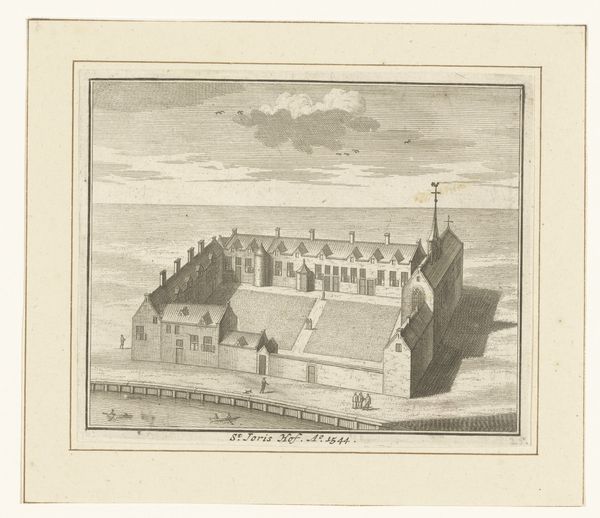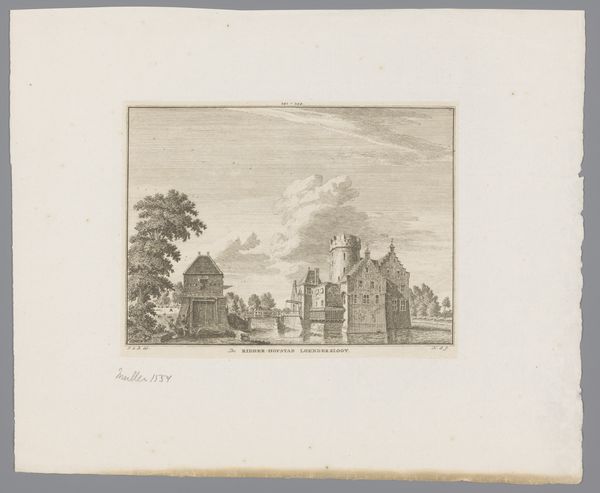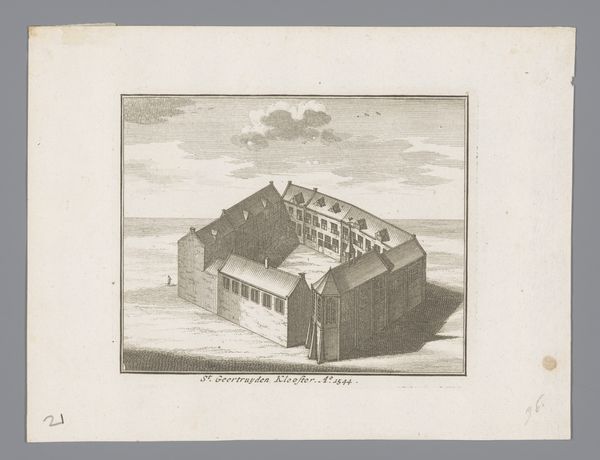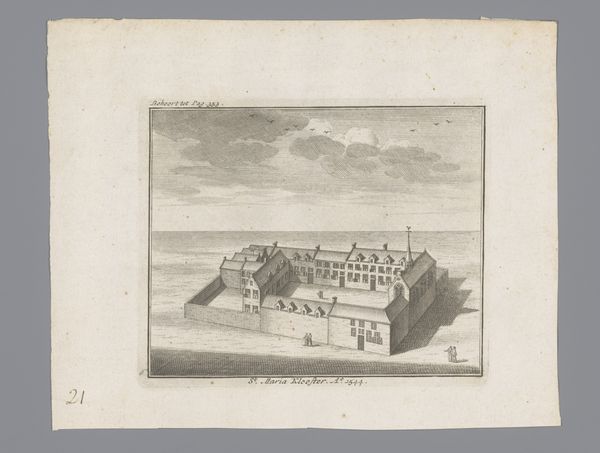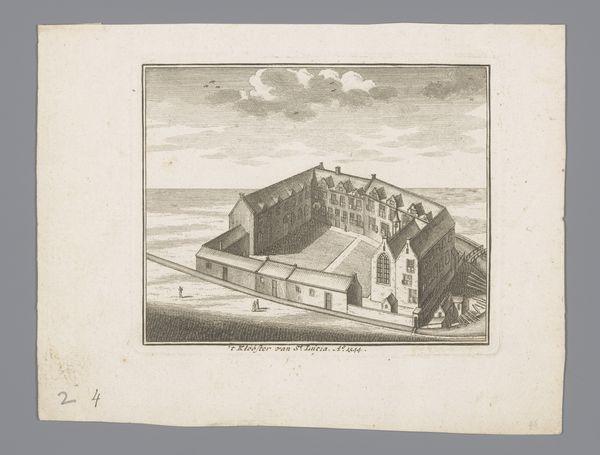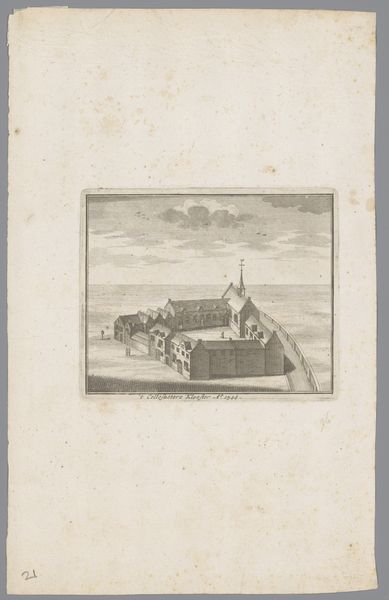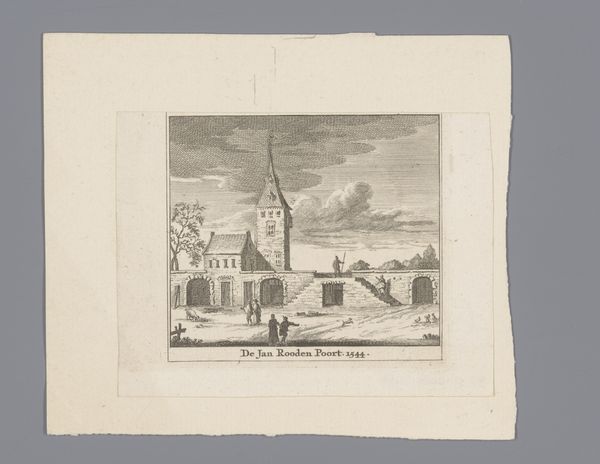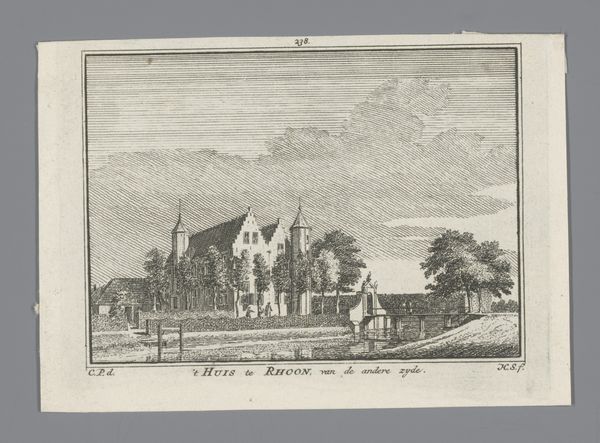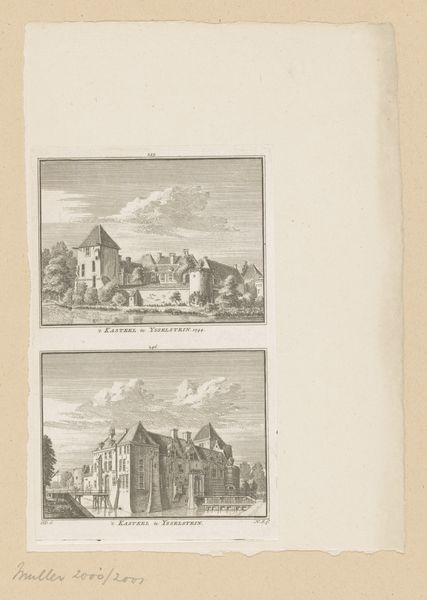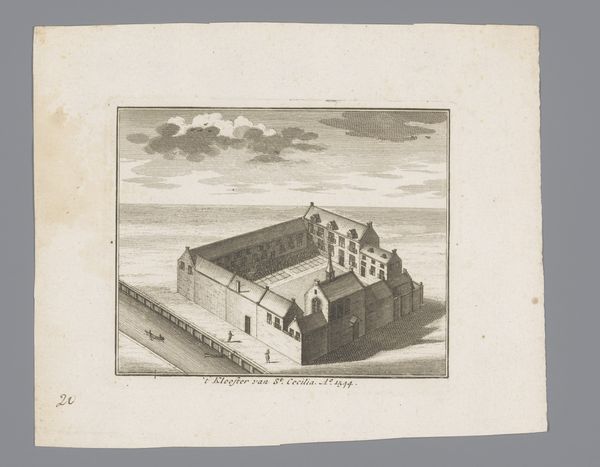
print, engraving, architecture
#
baroque
# print
#
landscape
#
geometric
#
line
#
cityscape
#
engraving
#
architecture
Dimensions: height 110 mm, width 135 mm
Copyright: Rijks Museum: Open Domain
Editor: Here we have "Bird's-Eye View of the Ursuline Monastery, 1544", made into a print in 1729, anonymous of course. The clean lines are so captivating. The layout gives an objective feeling, almost like an architect’s draft. How do you interpret its depiction within its historical context? Curator: It’s intriguing to view this image through a lens that considers how power structures influenced visual representation. This cityscape print from 1729 purporting to represent 1544—nearly two centuries separating subject and depiction—shows us not necessarily the *real* but rather what the image was intended *to convey* to its contemporary viewers. What was the public role of monasteries, and how were such institutions perceived during that period? Editor: I hadn't thought of it like that. Given its detail, wouldn’t the public see it simply as documentation? Curator: Documentation, perhaps, but also a statement. Consider the strategic "bird's eye" perspective itself. It asserts a kind of mastery, a comprehensive visual control over the space, reflecting societal attitudes towards religious institutions or maybe territorial control. Were these prints often commissioned by religious orders to enhance their public image? Editor: Interesting thought. Looking at it again, the sharp precision might indeed signify power and control more than mere documentation. Curator: Precisely! And notice the absence of figures, which empties the space of daily life. We’re left not with a vibrant community, but an idealized structure. The image performs a particular cultural and political work, beyond just visually archiving a building. How does understanding that tension between historical representation and socio-political motivations alter our perception of the work? Editor: It adds layers of complexity. What appears straightforward is loaded with intent. Now, I see the politics inherent within the imagery. Thank you for the historical deep dive!
Comments
No comments
Be the first to comment and join the conversation on the ultimate creative platform.
